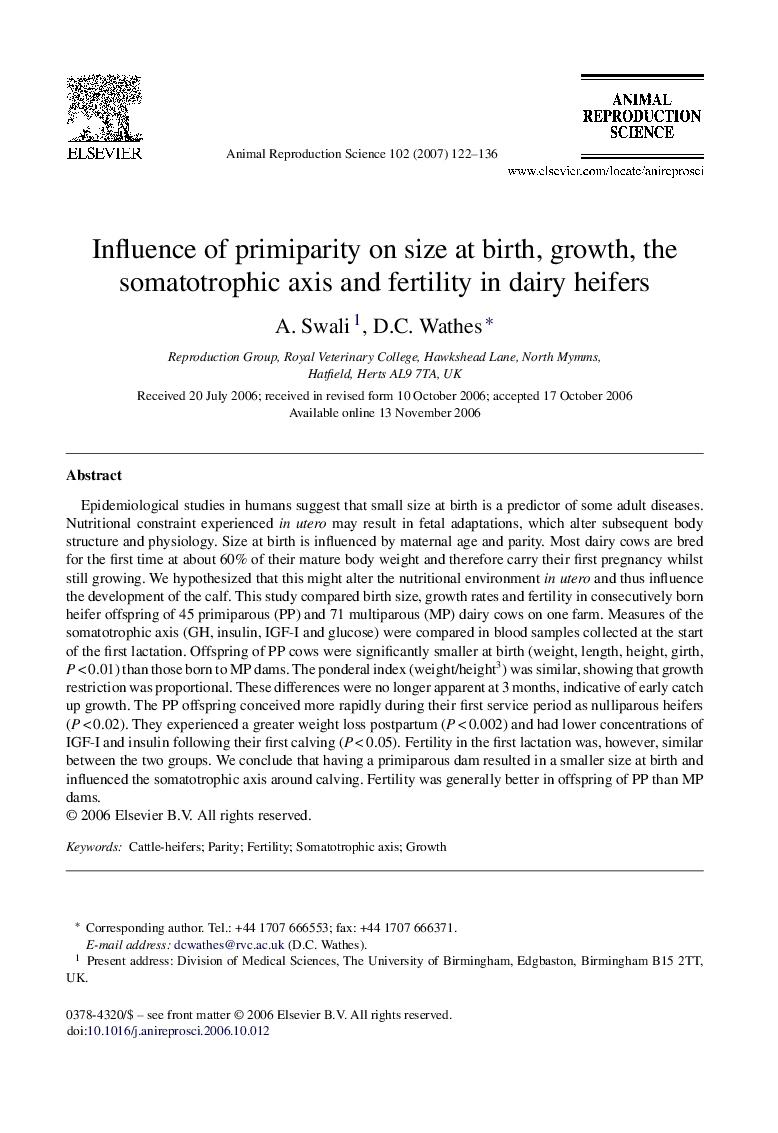| Article ID | Journal | Published Year | Pages | File Type |
|---|---|---|---|---|
| 2074521 | Animal Reproduction Science | 2007 | 15 Pages |
Epidemiological studies in humans suggest that small size at birth is a predictor of some adult diseases. Nutritional constraint experienced in utero may result in fetal adaptations, which alter subsequent body structure and physiology. Size at birth is influenced by maternal age and parity. Most dairy cows are bred for the first time at about 60% of their mature body weight and therefore carry their first pregnancy whilst still growing. We hypothesized that this might alter the nutritional environment in utero and thus influence the development of the calf. This study compared birth size, growth rates and fertility in consecutively born heifer offspring of 45 primiparous (PP) and 71 multiparous (MP) dairy cows on one farm. Measures of the somatotrophic axis (GH, insulin, IGF-I and glucose) were compared in blood samples collected at the start of the first lactation. Offspring of PP cows were significantly smaller at birth (weight, length, height, girth, P < 0.01) than those born to MP dams. The ponderal index (weight/height3) was similar, showing that growth restriction was proportional. These differences were no longer apparent at 3 months, indicative of early catch up growth. The PP offspring conceived more rapidly during their first service period as nulliparous heifers (P < 0.02). They experienced a greater weight loss postpartum (P < 0.002) and had lower concentrations of IGF-I and insulin following their first calving (P < 0.05). Fertility in the first lactation was, however, similar between the two groups. We conclude that having a primiparous dam resulted in a smaller size at birth and influenced the somatotrophic axis around calving. Fertility was generally better in offspring of PP than MP dams.
